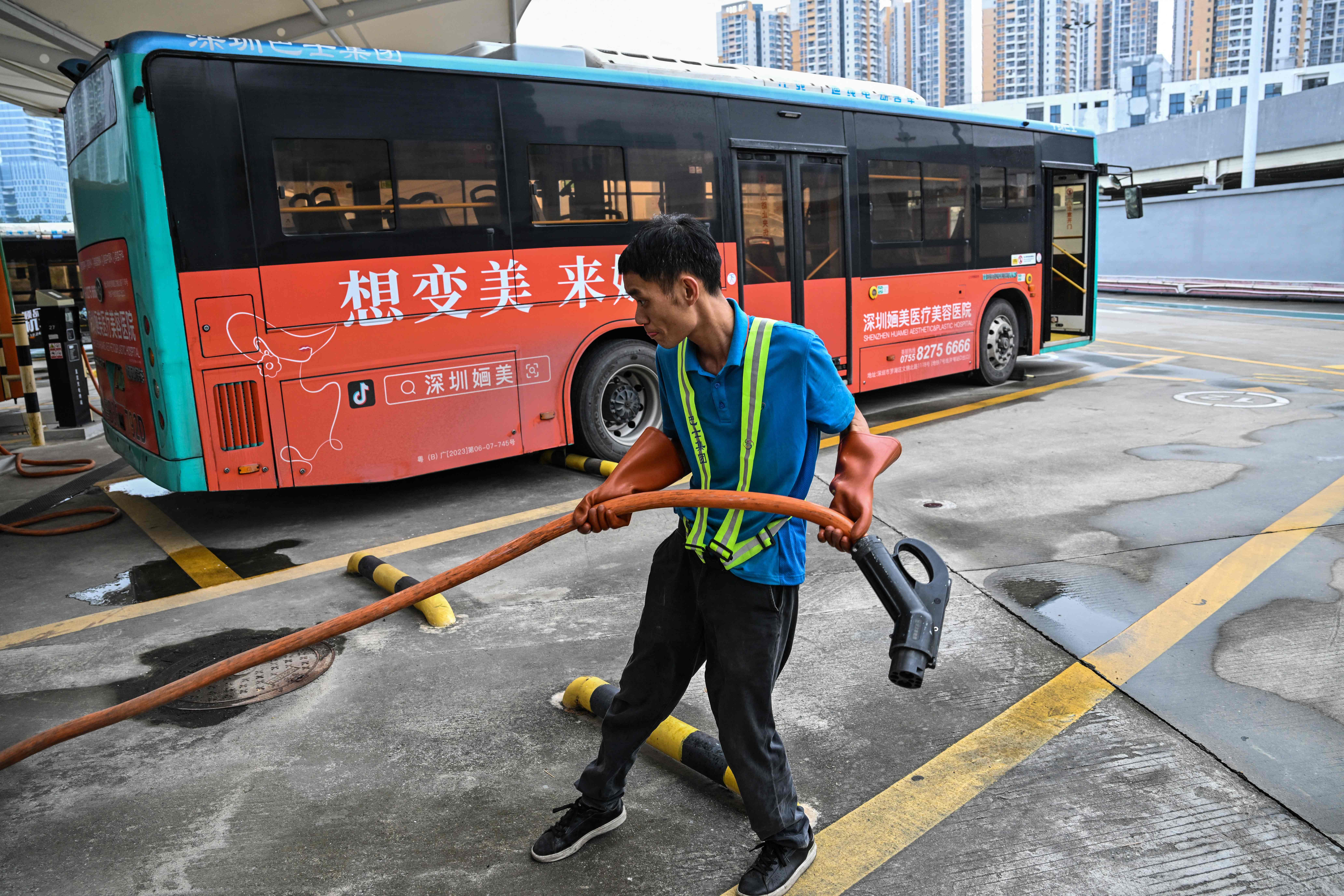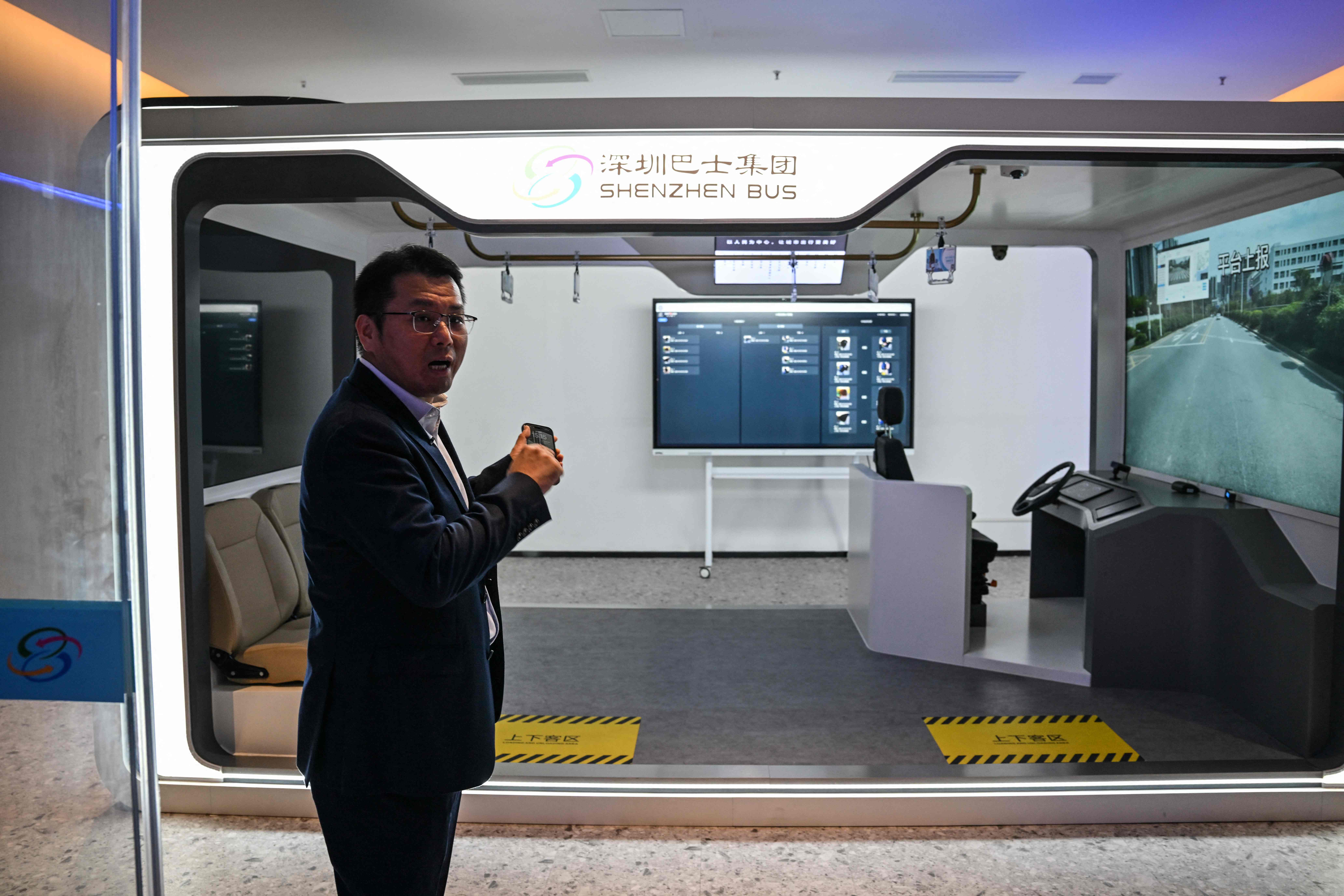AFP – On a rainy afternoon in Shenzhen, damp passengers jostle their way onto the megacity’s buses, the quiet foot soldiers of an electric revolution for coal-guzzling China’s public transport network.
Shenzhen ditched diesel buses and went fully electric in 2017 – a world first – with its taxi fleet not far behind.
Other Chinese cities have since followed suit, with many aiming to fully switch their systems before 2025.
Electrification is one of the most important strategies for reaching net-zero carbon emissions by 2050, according to the International Energy Agency, with bus decarbonisation representing around five per cent of cumulative emissions reductions in transport.
But so far China is an outlier, accounting for over 90 per cent of the world’s electric buses and trucks in 2021, according to the International Council on Clean Transportation.

“It didn’t happen in a night,” electric vehicle specialist Elliot Richards told AFP. “It was many years of planning and huge amounts of infrastructure work. But it’s made such a huge difference in terms of global awareness.”
Wrangling over the path to a net-zero future will be at the heart of the United Nations’ upcoming United Nations Climate Change Conference (COP28) climate summit in oil-producer Dubai, which begins in late November.
So far though, budget and planning constraints, a lack of knowledge and the difficulty of rejigging infrastructure in older cities have prevented others from replicating China’s experience, Richards said.
At a Shenzhen bus depot, driver Ou Zhenjian told AFP he had been ferrying passengers around the city for 18 years and saw a big difference with the shift to electric.
“It is really comfortable to drive… easy to operate, and environmentally friendly. It’s soundless too – it’s great to drive like this.”
“At the beginning of the service, we had to step-by-step solve problems,” deputy general manager of the Shenzhen Bus Group (SZBG) Ethan Ma told AFP.
“Now we can say we almost have the same technical performance of our e-buses compared to diesel buses in the past.”

There have been other, more obvious benefits.
For a huge metropolis crisscrossed by four-to-five lane avenues, traffic noise is noticeably subdued.
“(Diesel buses) emitted a lot of exhaust… Especially when walking on the road, the smell made me very uncomfortable, but now it’s gone,” a young male passenger told AFP as the bus purred through the city.
A World Bank case study on SZBG, the city’s largest public transport operator, found emissions from an e-bus over its service time were 52 per cent that of a diesel bus.
The analysis takes into account the fact that the local grid generates about half its electricity from coal, and found the switch had saved 194,000 tonnes of carbon dioxide annually.
Pollution in Chinese cities was a major factor pushing the central government to prioritise the switch in public transport, said managing director of Sino Auto Insights Tu Le.
And that top-down directive was key, with the World Bank noting transition “not only depends on technology but also political will”.
“They were thinking about this way before any other country was even considering it,” said Le.
Strong government financial support and close collaboration with automaker BYD – then a fledgling, now a giant in the global EV field – greatly contributed to success in Shenzhen.

By 2021 China supplied more than 90 per cent of the world’s e-buses, according to the ICCT.
The changes are already having a measurable effect.
In September, the IEA chief said the growth of electric vehicles globally – especially in China – meant oil demand was on course to peak before 2030, and coal “in the next few years”.






